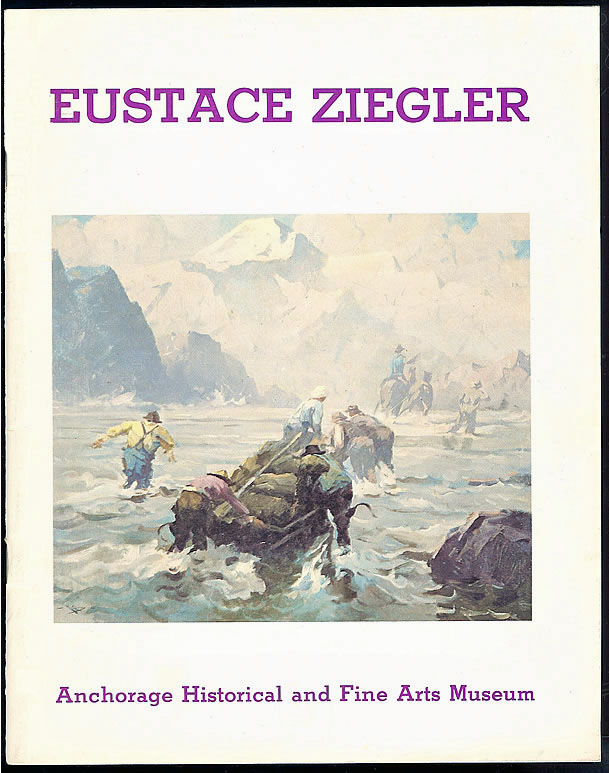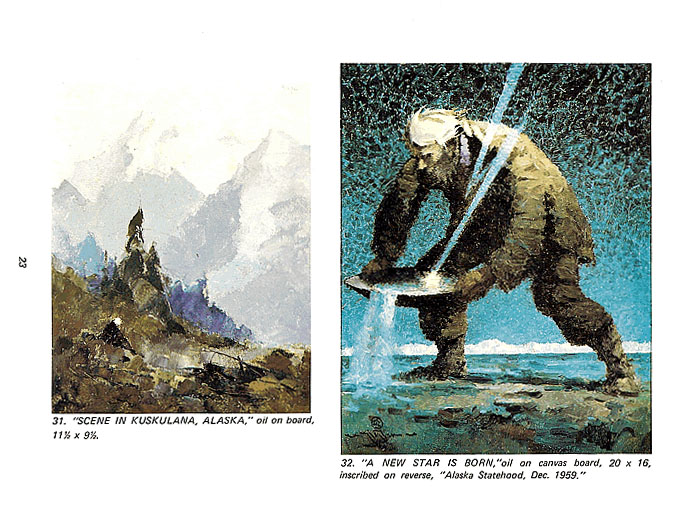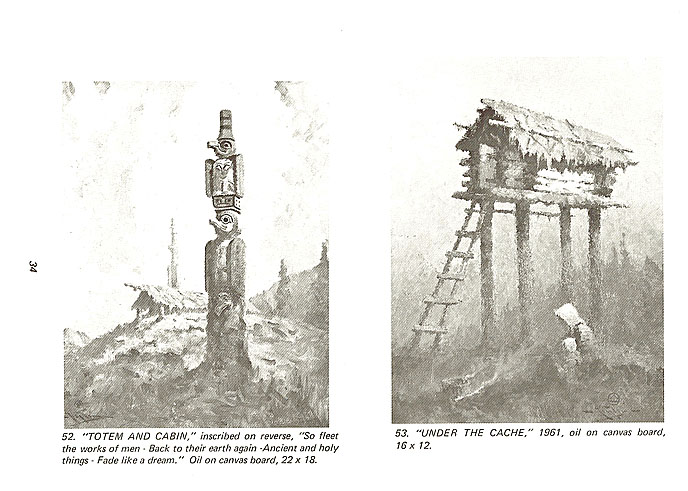Eustace Ziegler
A retrospective exhibition
July 31-August 28, 1977
Anchorage Historical and Fine Arts Museum
Exhibition catalog, Anchorage Historical and Fine Arts Museum, 1977, Soft Cover, Very Good, 7¾"-9¾". 36 pp., illustrations in color and b&w.
[shelf locator: Alaska artists bookshelf] $29.95 plus $2.50 postage (international orders extra) for this book. To order this item email dick@AlaskaWanted.com



An exhibition of the work of Eustace Paul Ziegler (1881-1969) seems to its organizer a natural sequel to the Sydney Laurence retrospective held here two years ago, another example of a painter known and admired throughout Alaska but not yet honored with a major exhibition in his artistic homeland. Another similarity lies in the fact that legend has already begun to obscure the outlines of the artist's life and accomplishment; and the business of an educational institution is to try to set the record straight. A third parallel, making the exhibition feasible as well as desirable, is the existence here in Anchorage of a substantial body of work in private collections, whose owners are willing to share it with the public. In both instances their generosity has extended beyond the exhibition period to the additional time necessary to prepare a color-illustrated catalogue. We are particularly indebted to the lenders of two very large paintings, "Pack Train Near Mount McKinley," and "Irish Wake," the latter from Carr-Gottstein Company. Private lenders generally have preferred to remain anonymous. Institutional lenders include Alaska Methodist University, the National Bank of Alaska and its Heritage Library, the University of Alaska Museum, the Alaska State Museum and The Berry-Hill Galleries, Inc., New York, all of whom made key works available to the exhibition. Until now there has been no publication on Ziegler more extensive than a newspaper article, so we are grateful also for the information lenders have been able to supply.... Most items in the show are illustrated, and catalogue entries accompany the illustration.
During the last two decades of the nineteenth century, a series of gold strikes lured thousands of adventurers to Alaska, and the pursuit of gold led to the development of other resources as well. In 1906, J. P. Morgan and Company and the Guggenheim brothers purchased the Bonanza copper mine in the Chitina valley, which became the nucleus of the Kennecott mines. Beginning in 1907, the syndicate pushed construction of the Copper River and Northwestern Railroad two hundred miles up the valley from Cordova to Chitina and the mines. Cordova immediately became one of the principal ports of access to the interior.
An Episcopal minister based at Valdez, Rev. E. P. Newton, visited the new construction camp and saw the need for a meeting place for homeless men, other than saloons. Bishop Peter Trimble Rowe agreed with him, but the ephemeral nature of mining towns suggested that construction of a church might be premature; so a tract of land was obtained and Rev. Newton was authorized to build a mission to serve as a place of worship on Sunday and provide "a homelike refuge for those whose tastes did not lead them to the saloon or gaming house." The bright red color of the mission and its dedication to St. George quickly gained it the nickname, "The Red Dragon." It was to manage this establishment that an adventurous young artist [Eustace Ziegler] came out from Detroit at the invitation of Bishop Rowe, arriving on a steamer from Seattle on a cold day in January, 1909.